Superfund Accomplishments Report - Fiscal Year 2022
Table of Contents
- Making Progress on EPA’s PFAS Roadmap: Publishing the PFOA and PFOS Notice of Proposed Rulemaking
- Accelerating Cleanups: Leveraging the Infrastructure Investment and Jobs Act
- Climate Change and Adapting Cleanup Remedies
- The Superfund Redevelopment Program
- EPA's Environmental Response Team
Opening Letter from OLEM Acting Assistant Administrator Barry Breen
Fiscal year 2022 reflected outstanding accomplishments. Superfund's Remedial Program received a once-in-a-generation $3.5 billion investment from the Infrastructure Investment and Jobs Act. This Infrastructure Investment and Jobs Act enabled Superfund to fund all backlogged cleanup construction projects for the first time in over a decade.
As well, EPA published a Proposed Rulemaking to designate two widely used per- and poly-fluoroalkyl substances as hazardous substances under Superfund. This marked the first time EPA proposed to add substances under this authority, helping to improve information regarding the prevalence of these substances, and improving efforts to hold responsible parties accountable for their actions.
Although it's impossible to summarize all the amazing work of our program, we attempted to highlight many of the major accomplishments of this past year in the report below. Important work still lies ahead, and we will continue cleaning up the nation's most serious uncontrolled or abandoned releases of contamination until all communities get the protections they deserve.

Acting Assistant Administrator, EPA Office of Land and Emergency Management
Piloting Superfund Community Workshops | Paden City, West Virginia

EPA’s Region 3 office piloted the first EPA Superfund Community Workshop at the Paden City Groundwater Superfund site as part of a national effort to improve community engagement earlier in the Superfund process. The workshop focused on introducing the Superfund process to the community and listening to feedback related to the site and how EPA can help address these concerns going forward. Approximately 40 community members participated in the workshop and expressed appreciation for EPA’s efforts. Superfund piloted four additional workshops in FY 2023 and is currently evaluating data to improve the workshops for future pilots.
Using a Collaborative Approach for Reducing Lead at Superfund Sites
In FY 2022, Superfund piloted a Lead Collaboration project to gather best practices to address multiple sources of lead at Superfund sites with the goal of improved health outcomes for children who may be exposed to that lead contamination. EPA is working with a broad range of local, state, territorial, tribal, and federal stakeholders to leverage multiple authorities and tools to address lead exposures beyond those directly associated with the Superfund site such as lead-based paint, lead from air sources, and lead in drinking water.
Superfund's Lead Collaboration Pilot in Action

At the Globe Union removal site in Garland, Texas, EPA's Children's Health Coordinator, the EPA Lead Based Paint Program and EPA’s Superfund Program worked with the Pediatric Environmental Health Specialty Unit to plan for free renovation, repair, and painting trainings in the city. These trainings encouraged firms and contractors to become lead-safe certified under EPA’s repair and painting rule and raised awareness among community leaders and the general public about lead exposure and the importance of hiring lead-safe certified contractors.
Making Progress on EPA's PFAS Roadmap: Publishing the PFOA and PFOS Notice of Proposed Rulemaking
EPA published its proposal to designate two of the most widely used per- and polyfluoroalkyl substances as hazardous substances under the Comprehensive Environmental Response, Compensation, and Liability Act. This action demonstrates EPA’s ongoing commitment to protect communities from the health risks posed by certain PFAS, also known as “forever chemicals” under the PFAS Strategic Roadmap. This rulemaking would increase transparency around releases of these harmful chemicals and help hold polluters accountable for cleaning up contamination from releases of perfluorooctanoic acid and perfluorooctanesulfonic acid above the reportable quantity.
Accelerating Cleanups: Leveraging the Infrastructure Investment and Jobs Act
The Infrastructure Investment and Jobs Act is accelerating EPA’s work to clean up contaminated sites in communities across the country with a $3.5 billion investment in the Superfund Remedial Program to address sites on the National Priorities List. It also reinstated the Superfund chemical excise taxes, making it one of the largest investments in American history to address legacy pollution. Since passage of the law, EPA has been putting the investment to work: approving funding to eliminate the backlog of construction work and obligating more than $1 billion in funds for work across more than 100 sites, including 70 sites in historically underserved communities.
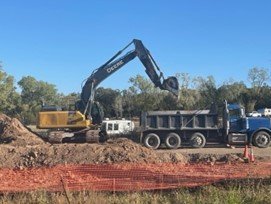
The Infrastructure Investment and Jobs Act in Action
Creek County, Oklahoma: Funding allowed the Wilcox Oil Company Superfund site team to begin addressing source contamination at the 150-acre site, which also includes the inactive and abandoned Lorraine and Wilcox oil refineries. As of October 1, 2022, approximately 20,000 tons of source material have been excavated and shipped off site for disposal. Four of nine source areas have been cleaned up, backfilled, and seeded.
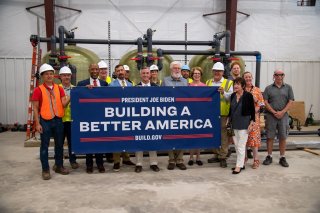
Lansdale, Pennsylvania: EPA broke ground to remove contaminated soil at the North Penn – Area 6 Superfund site thanks to a significant investment from the Infrastructure Investment and Jobs Act. Over 10,000 tons of soil has been removed and shipped in over 400 truckloads for disposal.
Following up on Progress at the Lower Darby Creek Area Superfund Site a Year After Infrastructure Investment and Jobs Act Funding
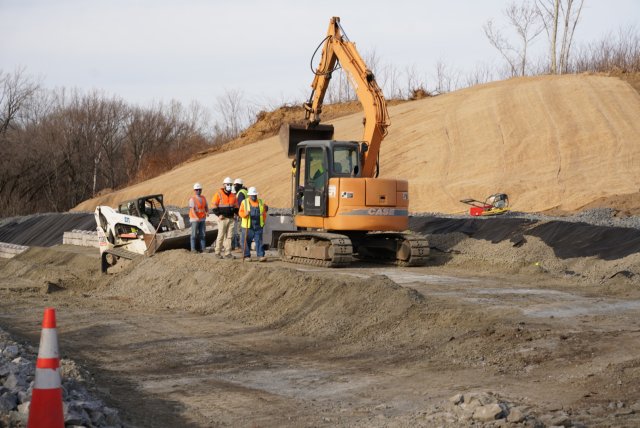
In 2021, the EPA Administrator announced plans for an initial $1 billion investment in Superfund’s Remedial Program from the Infrastructure Investment and Jobs Act at the Lower Darby Creek Area Superfund site. The historic announcement was also symbolic for the surrounding communities that have faced long-standing issues due to a history of flooding, displacement, hazardous waste dumping by local industry and failed government interventions. With the investment, communities living near many of the most serious uncontrolled or abandoned releases of contamination will finally get the protections they deserve.
Approximately $22 million of that initial investment went to support cleanup actions at the Lower Darby Creek Area site and enabled EPA to accelerate the cleanup timeline for part of that site by over a year. The investment allowed EPA to employ an aggressive construction schedule that realized $5 million in savings and resulted in site work being four months ahead of schedule.
A year after the investment, EPA capped 20 acres of landfill with a forested evapotranspiration cover, constructed 3 acres of mitigation wetland and stormwater management areas, and stabilized over 700 feet of streambank. These tremendous efforts, made possible by the Infrastructure Investment and Jobs Act, significantly alleviated environmental burdens previously impacting adjacent communities. EPA will continue using Infrastructure Investment and Jobs Act investments and other Superfund funding mechanisms to remediate the site and restore environmental equity to communities impacted by the Lower Darby Creek Area Superfund site.
For more information on how EPA is using Infrastructure Investment and Jobs Act funding to accelerate cleanups, better protect human health and the environment, and serve communities nationwide, please visit our Highlights page.
Infrastructure Investment and Jobs Act Benefits Extend Beyond the Sites Directly Funded
Infrastructure Investment and Jobs Act funding freed up congressionally appropriated remedial funds to allow EPA to support remedial actions at the Portland Harbor Superfund site in Portland, Oregon. In FY 2022, 14 enforcement instruments for remedial design were implemented. When no parties stepped up to perform the remedial design for remaining areas of the site, Cathedral Park and orphaned areas, EPA conducted initial sampling. Cathedral Park provides the only public access to the river in north Portland, a historically underserved area where EPA meets with a working group of community members. Ultimately, because of the importance of the park to this underserved community, EPA committed to follow up the initial sampling with a complete design to make sure it stayed on schedule with the other remedial design areas.
Climate Change and Adapting Cleanup Remedies
Climate change is a real and prevalent threat to human health and the environment, causing extreme weather and environmental phenomena that adversely impacts communities across the country. The Superfund Program continues to adapt cleanup strategies to ensure remedies remain resilient and communities remain protected.
OLEM published its 2022-2023 Climate Adaptation Implementation Plan, which identifies priority actions that it will take to ensure that its programs, policies, and operations remain effective under future climate conditions. Especially noteworthy is Superfund's use of new climate change vulnerability assessments that look to the future to determine potential vulnerabilities in cleanup designs based on projected climate trends. Superfund will use data from these new climate change vulnerability assessments, in addition to current climate vulnerability assessments, based on past climate science, to develop climate change-resistant cleanup strategies.
Ensuring Remedy Resilience | U.S. Oil Recovery Superfund Site, Pasadena, Texas
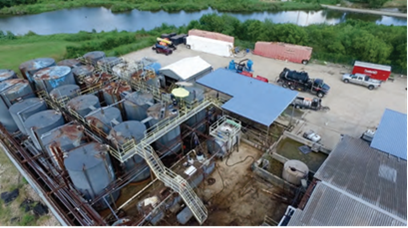
The potentially responsible party conducted hurricane preparedness actions to progressively manage and remove wastes at the surface of this former used oil processor and wastewater treatment facility. The PRP recognized that continued site stabilization was critical due to the site’s low elevation, proximity to Vince Bayou, and potential for increased weather impacts due to climate change. This multi-year effort concluded in 2022 with approximately 9.89 million gallons of liquid and 1.29 million gallons of sludge and solids removed and transported off site. The site is now even more well positioned to handle extreme weather events, with minimal potential for capped contamination release, pending a final cleanup action.
The Superfund Redevelopment Program
EPA's Superfund Redevelopment Program supports community revitalization by facilitating the return of sites to beneficial use. Reusing Superfund sites can be transformational, breathing new life into vacant lands and creating new opportunities for communities. Today, many once-blighted properties across the country are now in use for a wide range of purposes, including shopping centers, offices, public parks, wildlife habitat, neighborhoods, and renewable energy facilities.
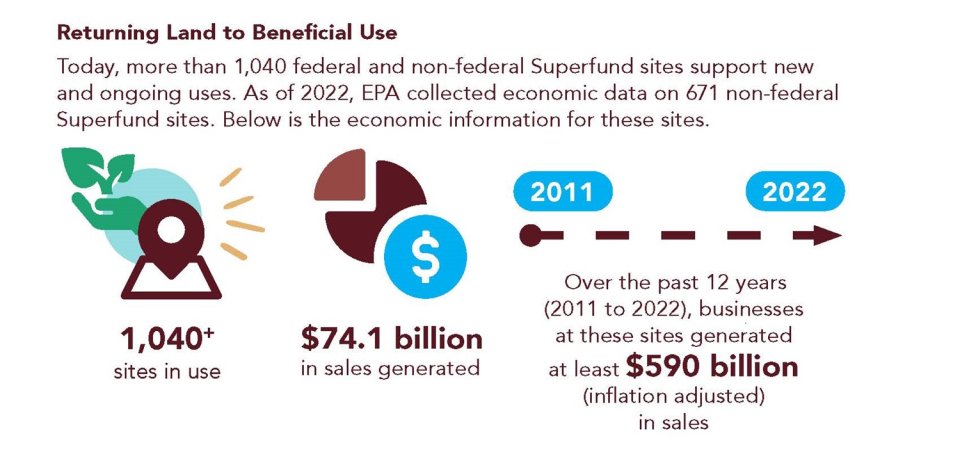
EPA's Environmental Response Team
EPA’s Environmental Response Team provides scientific and engineering expertise for a full range of environmental response actions at contaminated sites, including unusual or complex emergency incidents. ERT’s expert knowledge and range of advanced tools ensures efficient cleanup of releases of hazardous wastes.
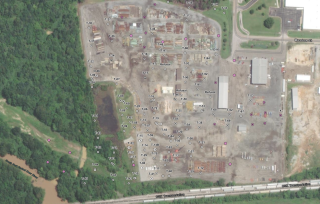
Using Advanced Technologies to Clean Up Contamination
EPA is ensuring environmental hazards are addressed at the American Creosote Works, Inc. (Jackson Plant) Superfund site, which is located southwest of Jackson, Tennessee. The state of Tennessee has major plans for a highway infrastructure project to traverse the site after cleanup. A wood-treating facility was active on site from the early 1930s to late 1981. The site includes underground contaminated plumes of dense nonaqueous phase liquids. This contamination, if not addressed, would potentially impact the ecosystem of the local Forked Deer River. EPA added the site to the National Priorities List in 1986 because of contaminated structures, liquid waste, sludge, soil, and groundwater resulting from facility operations. Currently, ERT is assisting EPA’s remedial project manager and the U.S. Army Corps of Engineers with an evaluation of the extent of contamination and potential remedial approaches for addressing DNAPLs at the site. ERT performed a three-week direct-sensing investigation to inform an Engineering Evaluation/Cost Analysis in determining viable remedial alternatives.
Potential remedial approaches under consideration include in-situ thermal treatment, stabilization, and construction of a passive barrier. The investigation employed multiple technologies, including laser-induced fluorescence using a Tar-specific Green Optical Scanning Tool, to detect creosote DNAPL lenses, a hydraulic profiling tool to identify hydraulic conductivities of various soil lenses, and a cone penetrometer to determine lithology, soil behavior types, and geotechnical data. More than 80 borings were advanced, producing high-resolution boring logs as well as contaminant/geological cross-sections and three-dimensional plume visualizations. The project was a joint effort led by EPA Region 4 technical support, USACE and ERT.
Looking Ahead
The Superfund Program has set yet another ambitious agenda for FY 2023 to tackle our nation’s most pressing environmental hazards. A second wave of approximately $1 billion in Infrastructure Investment and Jobs Act funding will allow us to start new cleanup projects and expedite more than 100 others to address legacy pollution and ensure that communities get the protections they deserve. We are also building off last year’s momentum and aiming to designate additional PFAS chemicals as hazardous substances in a forthcoming Announcement of Proposed Rulemaking.
Looking forward, we are already working hard in the new year to continue our mission and make clean air, land, and water a reality for all Americans.
